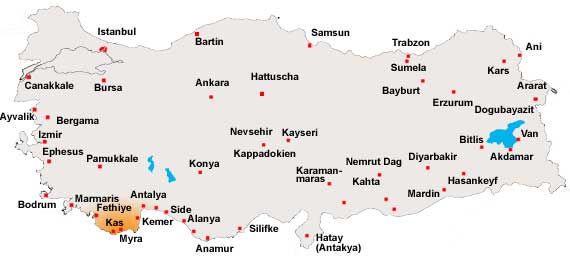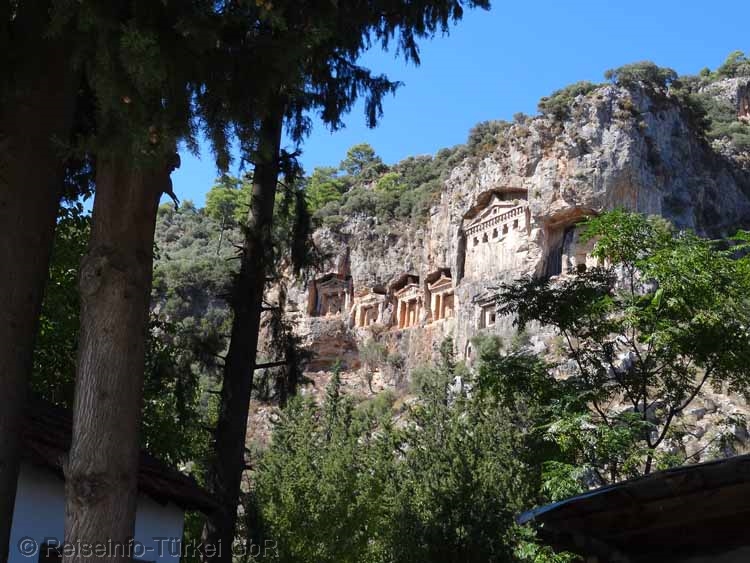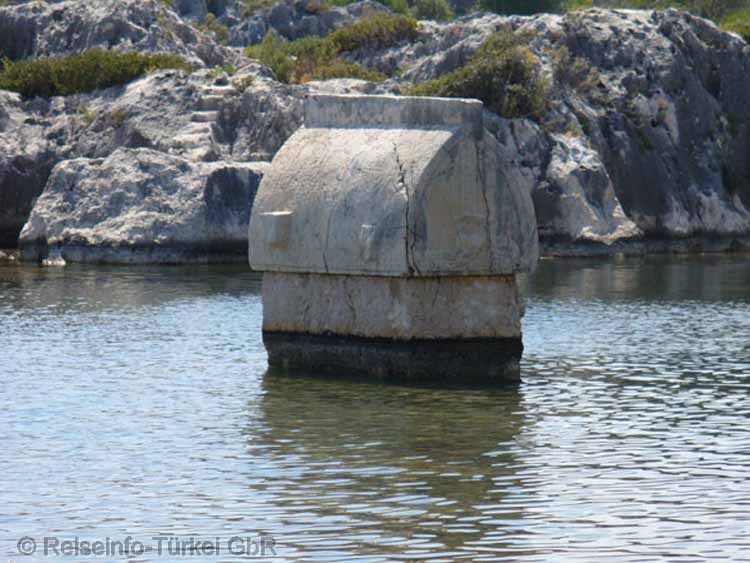|
Interesting places in Turkey |
|||
| Lycia |
|
||
| King's tombs and sarcophagi | |||
| Forms of burial in ancient Lycia | |||
|
|
|||
|
|
|||
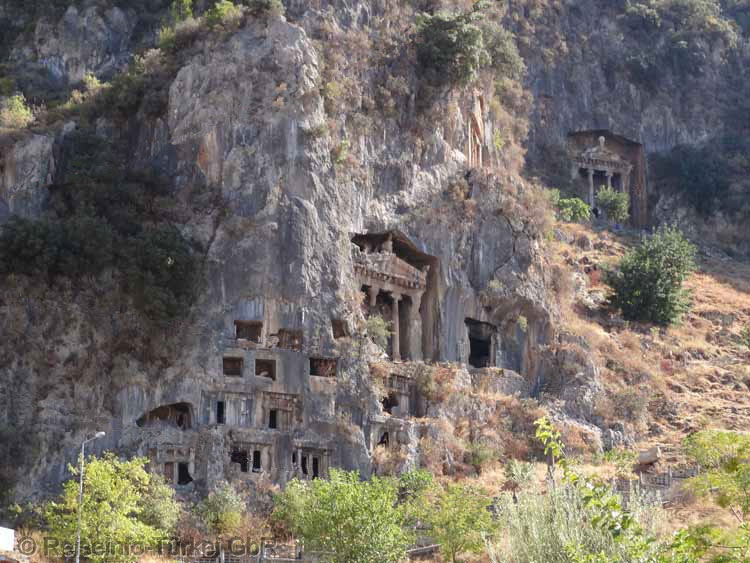 |
|
||
| The famous rock tombs of Telmessos (Fethiye) | |||
|
The most famous Lycian rock tombs are probably those of Telmessos, today's Fethiye and the rock tombs next to the Roman theatre in Myra. |
|||
| What is, or was Lycia? | |||
|
|
|||
|
The area, which was called Lycia, extends over the western of the two semicircular bulges on the south coast of Asia Minor.
It bordered Caria in the west, Pisidia and Phrygia in the north and Pamphylia in the east. |
|||
|
Remarkable is the pronounced tendency to build representative tombs, which are almost ubiquitous. Among the most conspicuous grave types are rock tombs, whose facades transform a wooden architecture into stone, pillar tombs (also called tombstones) such as the so-called Harpyia Monument of Xanthos and stone sarcophagi with the ogival lids typical of the landscape. |
|||
|
|
|||
| The rock tombs near Dalyan from the 4th century B.C. | |||
|
|
|||
|
Among the most famous rock tombs on the Turkish south coast are the rock tombs of the Carian kings near Dalyan. Here, too, the style of the Lycian royal graves was adopted. |
|||
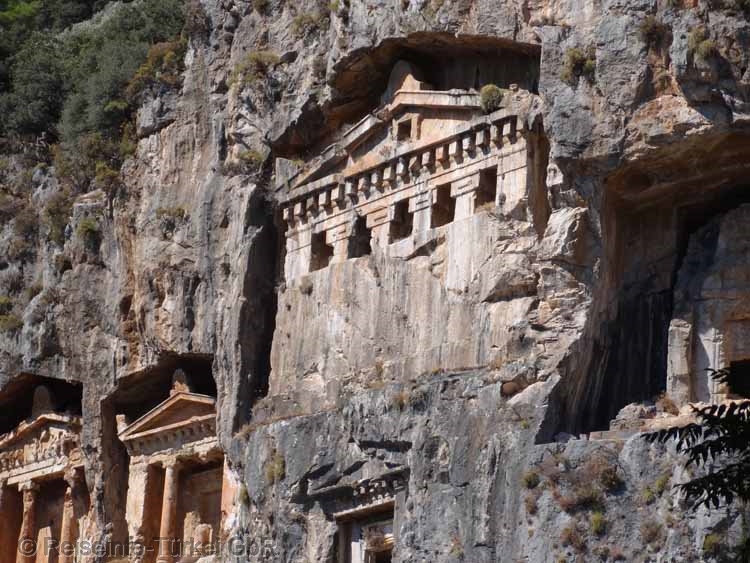 |
|||
|
The unfinished royal tomb impressively shows that the facades were knocked out of the rock from top to bottom. Why this tomb was not completed lies in the dark of history. It is assumed that the client died prematurely and that the balance of power changed as a result. |
|||
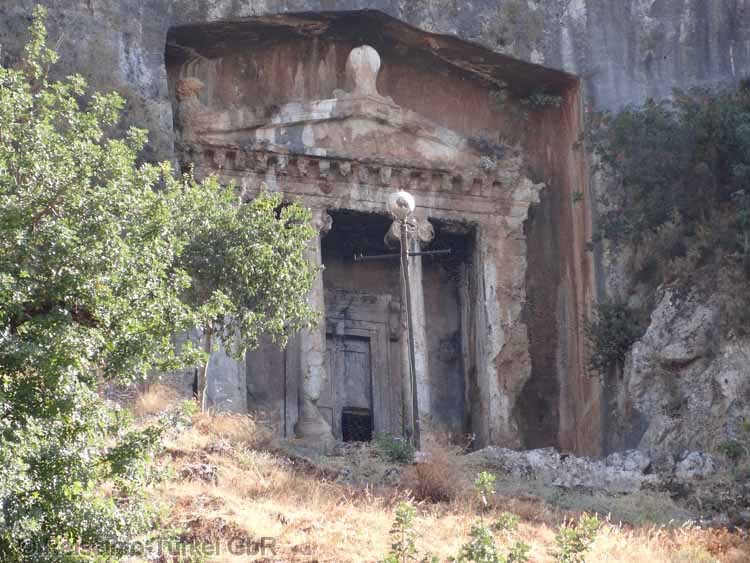 |
|||
| The tomb of Amyntas, son of Hermagios, in Telmessos (Fethiye) from the 4th century B.C. | |||
|
|
|||
|
|
|||
| The rock tombs of Myra | |||
|
|
|||
| Rock tombs in Tlos | |||
|
|
|||
| Lycian king's tomb in Pinara | |||
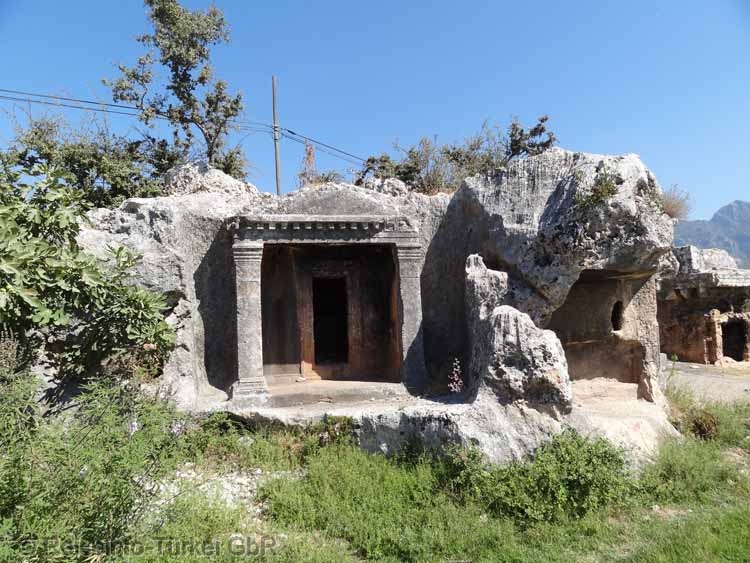 |
|||
| Lycian house graves in Araxa | |||
|
|
|||
| Some of the approx. 900 burial caves in the rock face below the Acropolis in Pinara | |||
|
|
|||
|
The caves in Pinara are special in their variety. Decoreless burial caves carved out of the rock can be found all over Lycia, but are rather isolated. |
|||
|
|
|||
| Lycian sarcophagus in Kyaneai | |||
|
|
|||
|
The "common" Lycian, if he could afford it, was buried in stone sarcophagi with the ogival lid typical of the landscape. |
|||
|
|
|||
| Lycian sarcophagi in the eastern necropolis of Timiussa (today Üçağiz) | |||
|
|
|||
|
|
|||
| Lycian sarcophagus on lowered ground in the bay of Kekova | |||
 |
|||
| Today a well-known photo motif: The old lycan royal sarcophagus in Kaş. | |||
|
|
|||
| Lycian pillar tombs in Xanthos. On the right the Harpyia Monument | |||
|
The Harpyia Monument (around 480 BC) is one of the two pre-Roman grave pillars that tower above the rows of seats in the west of the Xanthos Theatre. Relief plates (copies) cover a burial chamber, which rests on a 5 m high monolithic pillar. The original relief plates are now in the British Museum. The directly adjacent monument from the 4th or even 3rd century B.C. is actually a double grave. The tomb pillar is composed of slabs and thus forms a lower burial chamber. The sarcophagus on it imitates a Lycian wooden house with a gabled roof. |
|||
